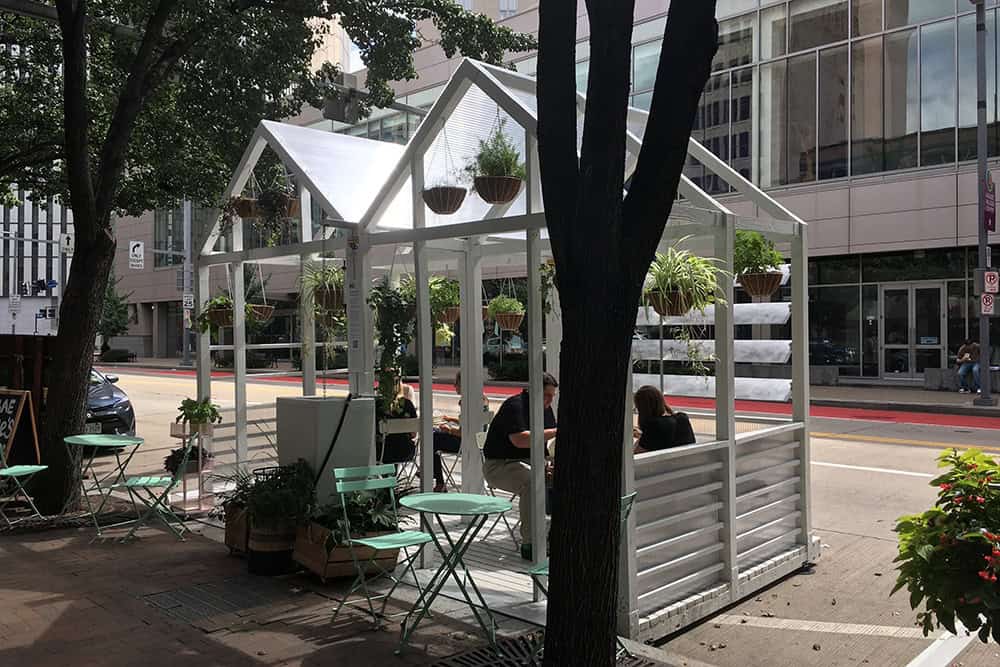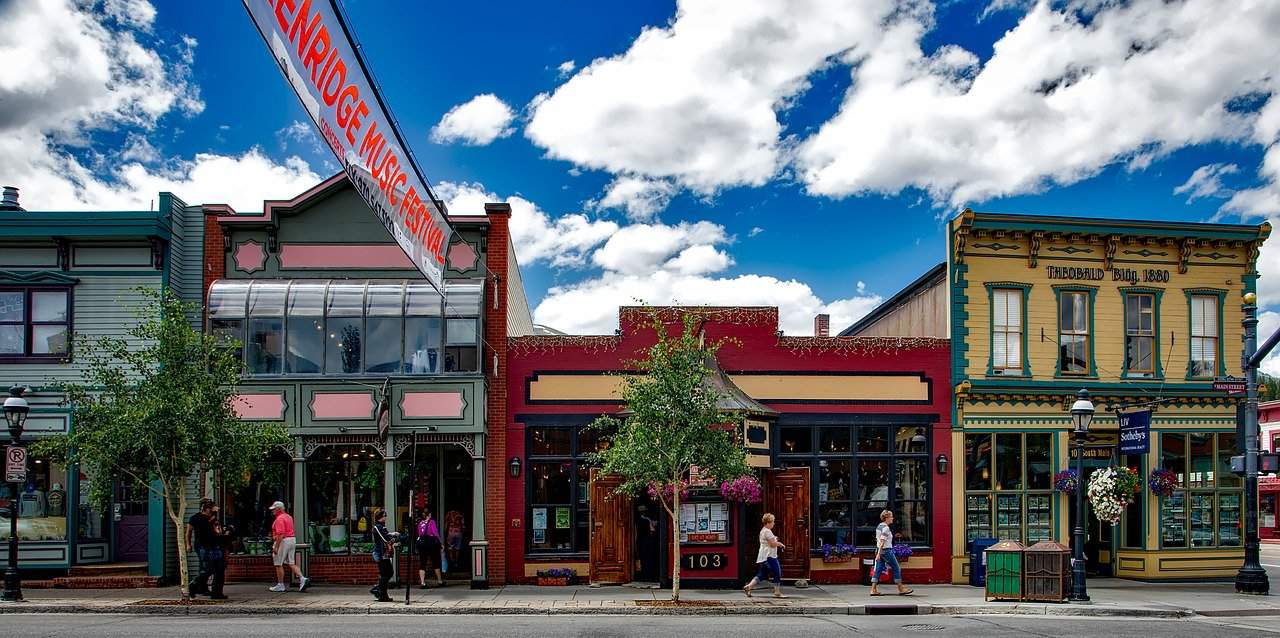
Businesses take to the streets to create a new normal
Business districts around the world are slowly re-opening to serve their customers — but things look a whole lot different. Face masks, plexiglass, queueing, updated checkout routines, all of which drastically alter the operations of small businesses that owners have worked tirelessly to perfect.
One of the reasons we love our local businesses is that they have been built by people who know how to get creative! In response to the coronavirus crisis and the strict social distancing measures being put in place across the globe, businesses and business districts are banding together to protect their livelihood – opening up their doors, closing down streets and transforming parking lanes into walkable (and socially distanced) hubs of activity.

Let’s Party Like It’s 1899!
Pedestrianization, or restricting streets for non-motorized vehicle use only, is not a new or radical idea. It’s how most major city centers began, and for many in Europe, this has never changed. For example, streets in Avignon in Southern France, a medieval village, grew organically from market stalls inside the walled city. Many of the shops face alleyways too narrow for cars, creating a vast network of walkways and plazas accessible only on foot or on bike.
In search of a “new normal”
We now know that infection from the coronavirus happens most often in indoor environments. Outside of the home, the greatest risk of infection is through touch or sustained exposure to people who are asymptomatic but infected. With strict social distancing measures being enacted across the globe, many formerly crowded business districts are coming up against huge challenges to updating their operations to keep people safe.
Restaurants and retailers are being required to limit occupancy or make more space for people to shop and dine.. This is impacting the already narrow profit margins of small businesses, who are simply unable to serve their usual amount of customers. Now, cities across the world are responding to this challenge, by reclaiming the street space in their business districts and handing it over to small businesses to expand their operations. With the weather getting nice and folks itching to find a semblance of “normal”, shopping and dining al fresco seems like a great – and safe – option.
Here are some places that have explored this idea in a way that they’re hoping will safely reinvigorate their small business local economies:
Downtown Tampa’s Sparkman Wharf reopens to the public on Tuesdayhttps://t.co/pVJ3dwiBVV
— Creative Loafing: Tampa Bay (@cl_tampabay) May 18, 2020
Tampa Florida
Scenes from Tampa Florida look almost like they were taken on any weekend night last summer. The city’s mayor worked directly with local businesses to close down key business districts’ streets to cars, and waived permitting requirements for food establishments so they could safely expand their outdoor seating areas into the right-of-way.

Vilnius, Lithuania
The capital of Lithuania, Vilnius, will give over almost all public space to bar and restaurant owners who wish to set up outdoor dining, effectively turning their historic downtown into one giant open-air cafe!

BaeBae’s Kitchen dining “parklet” | Pittsburgh Downtown Partnership
San Francisco, California
San Francisco says now is the time for the Parklet. For areas where closing the entire street isn’t an option, utilizing an adjacent alley, parking lot, or even parking spaces as an open air dining area works great too. BaeBae’s Kitchen in Downtown Pittsburgh has had their parklet dining area since 2018. (and it’s super cute!)

Breckenridge, Colorado
The Colorado town of Breckenridge is hoping that the festival atmosphere of closing the streets will bring people back to their main street safely and allow restaurants to operate with enough income to stay afloat.
Amsterdam, Netherlands
In Amsterdam, an art centre restaurant has begun using miniature greenhouses as outdoor private dining booths.

Bring it home to Pittsburgh!
Bike lanes, pedestrianization and limiting parking have always been hot-button topics here in the Steel City. However, there CAN be win-win solutions that help put people first, while making sure that businesses continue to thrive. Here are some spots in Pittsburgh that could easily be converted into pedestrianized business districts:
Market Square in Downtown: The heart of downtown Pittsburgh also boasts the closest thing we have to an open-air European-style plaza — and like those plazas, we think Market Square should have been closed to car traffic ages ago! Businesses could receive their daily delivery trucks during a designated time period, and the existing street parking within Market Square could be transitioned for those with disability placards only.
Penn Avenue in the Strip District: We all know the spot where the bi-directional Penn Ave bike lane ends, dropping confused cyclists into the busiest part of the Strip District with not much more than thoughts and prayers for safety. Add in all the hundreds of pedestrians squeezed onto narrow sidewalks on a typical weekend afternoon in the Strip, and you’ve got a recipe for disaster on a stretch where motorists are looking out more for a parking spot than they are for people walking. We hope to see further discussion on the pedestrianization of Penn Ave, especially in light of the ongoing pandemic.
Walnut Street in Shadyside: One of the best candidates for pedestrianization due to a lack of bus traffic, this area is already considering a pedestrianization as a way to help aid its small shops. The effort is being explored by the Shadyside Chamber of Commerce & Councilperson Erika Strassburger.